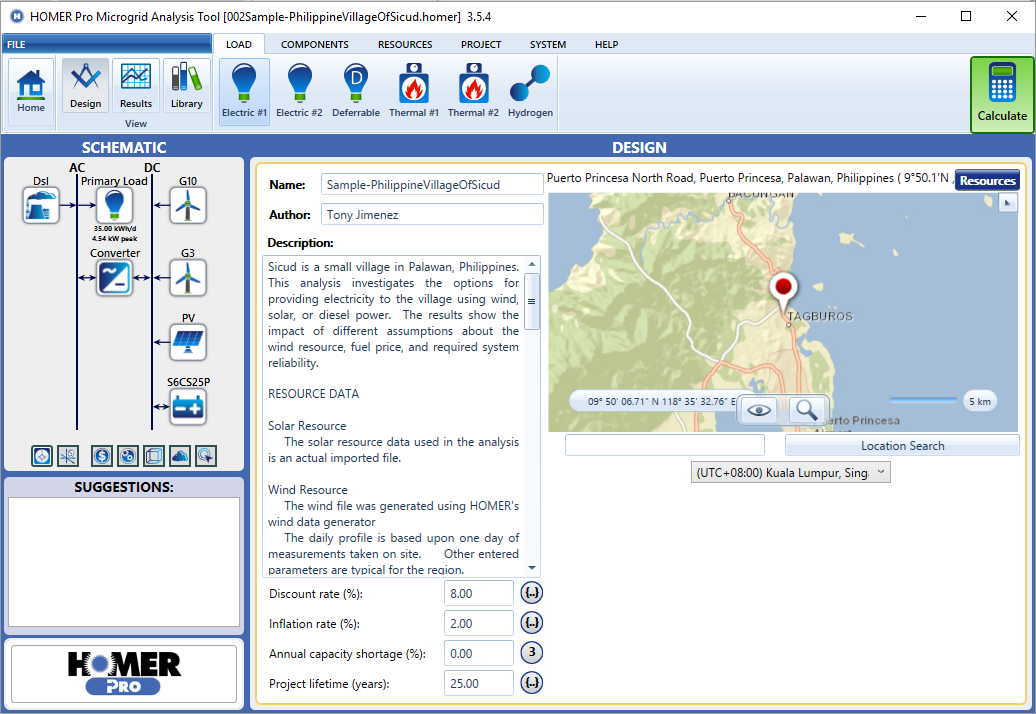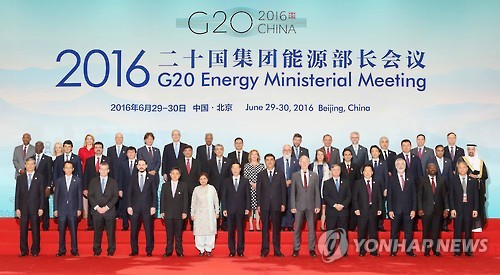>Homer Energy News
Using Software to Make a Compelling Business Case for Mini-grid Deployment
It is no longer necessary to rely on centralized systems for power, says HOMER Energy’s Director of Energy Engineering John Glassmire in an article appearing on the Energy Access Practitioner Network’s website. Glassmire explains that with technological innovation finally enabling end users to assert control of their energy supply, combined with smart planning, the time has come for the rise of mini-grid/microgrid deployment.
“These core technologies, bolstered by new control approaches and smart planning tools, are enabling a democratization of the electrical sector unimaginable only a decade ago,” writes Glassmire.

>Global Microgrid News
G20 Energy Ministers Recognise Progress on Renewables, Set Stage for More Action

2016 Energy Ministers Meeting, image via Yonhap News
Before the G20 Energy Ministers meeting last month, energy ministers and other senior officials gathered to review recent renewable energy progress and discuss future plans. According to the International Renewable Energy Agency (IRENA), the group met to take stock of work completed under the G20 Toolkit of Voluntary Options for Renewable Energy Deployment, adopted in Istanbul last year at the first-ever G20 Energy Ministers meeting.
“The dramatic and ongoing shift in the global energy sector accelerated in 2015,” says IRENA Director-General Adnan Z. Amin in a news release. “Renewable energy costs have declined dramatically and will continue to do so, investment reached record levels, and global capacity additions set new record highs. Much of this can be attributed to the G20’s strong commitment to renewables.”
Led by IRENA under the guidance of the G20 Energy Sustainability Working Group, the 2015 toolkit focuses on five areas.:
- Driving down technology costs: Prices for solar PV modules and wind turbines have fallen roughly 80% and 30 to 40% respectively since 2009. New analysis estimates that by 2025, average electricity costs could decrease a further 59% for solar PV, 35% for offshore wind, and 26% for onshore wind compared to 2015. Electricity prices for concentrated solar power could also decrease as much as 43%.
- Exchanging good practices on enabling policy frameworks and power system integration: As of 2016, 173 countries have renewable energy targets, up from 43 countries in 2005.
- Mobilizing finance through risk mitigation: A record $286 billion was invested in renewables in 2015, 3% higher than the previous record in 2011. But to increase deployment of renewable energy to the levels needed to meet global climate and development goals, this figure must double by 2020 and more than triple by 2030. Achieving this level of investment is possible if policymakers target various different investment constraints.
- Technology potentials and roadmaps: Renewable power generation capacity grew 83% in 2015 – the highest rate ever – but a much higher growth rate is both technically and economically feasible. IRENA found that doubling the share of renewables in the global energy mix by 2030 can save up to $4.2 trillion annually by 2030 – 15 times more than the costs – thanks to avoided expenditures on air pollution and climate change.
- Deployment of modern bioenergy: In April, IRENA released the paper Boosting Biofuels: sustainable Paths to Greater Energy Security, which provides an overview of the challenges of scaling up biofuels and different means for G20 countries to overcome those challenges.
IRENA will continue to coordinate the implementation of the toolkit to accelerate renewable energy deployment under the guidance of the G20 and with the support of other international organizations. Energy ministers are now considering a G20 Voluntary Action Plan on Renewable Energy to drive the continued expansion of renewable energy in G20 countries.
